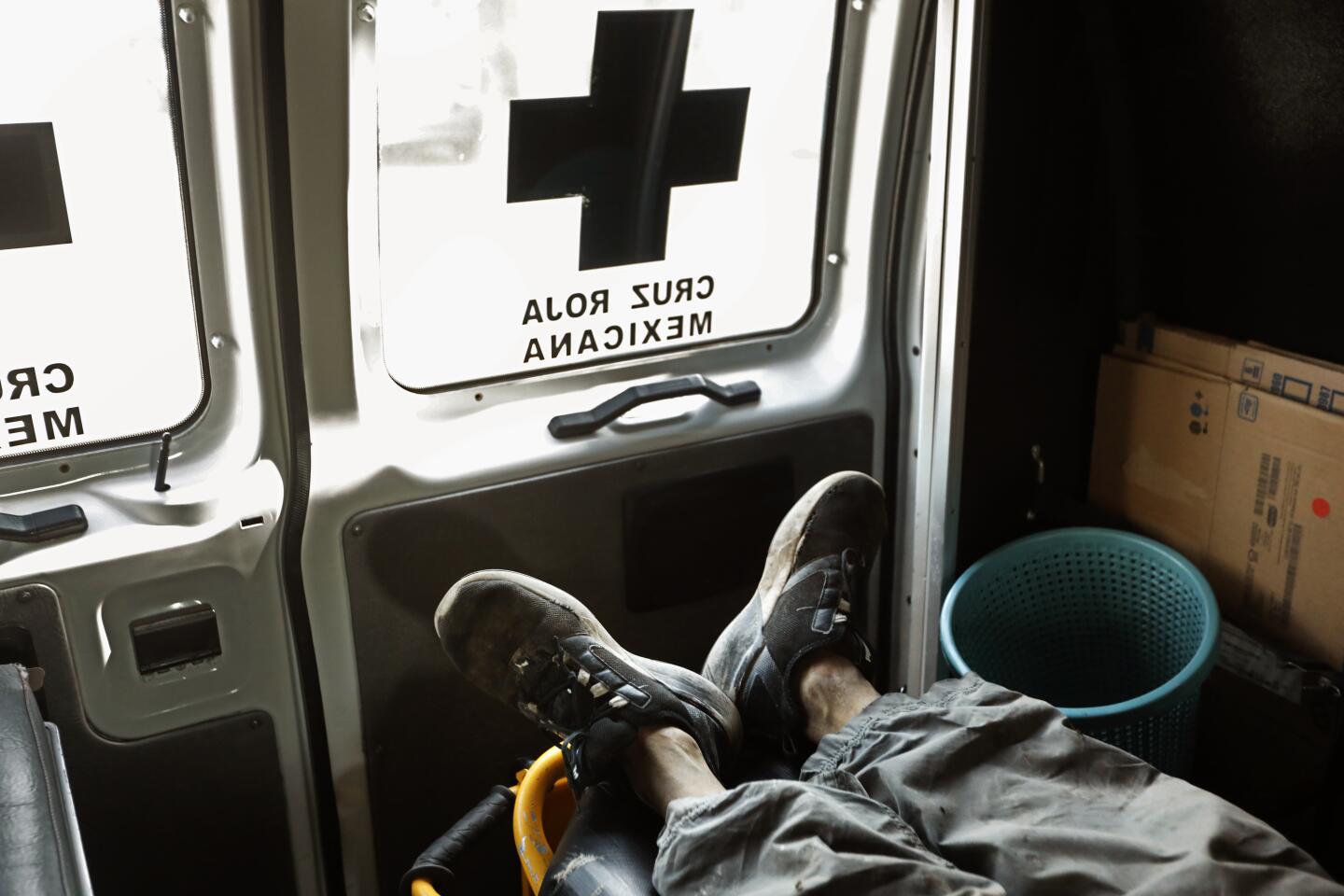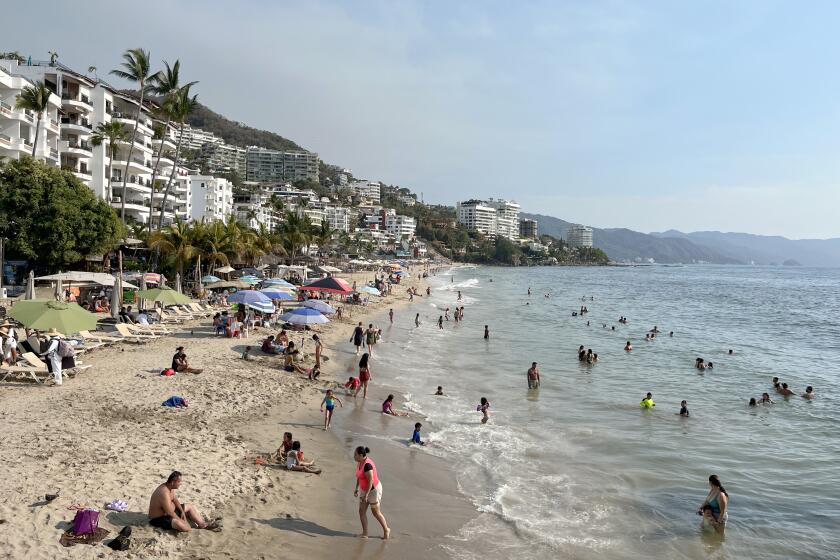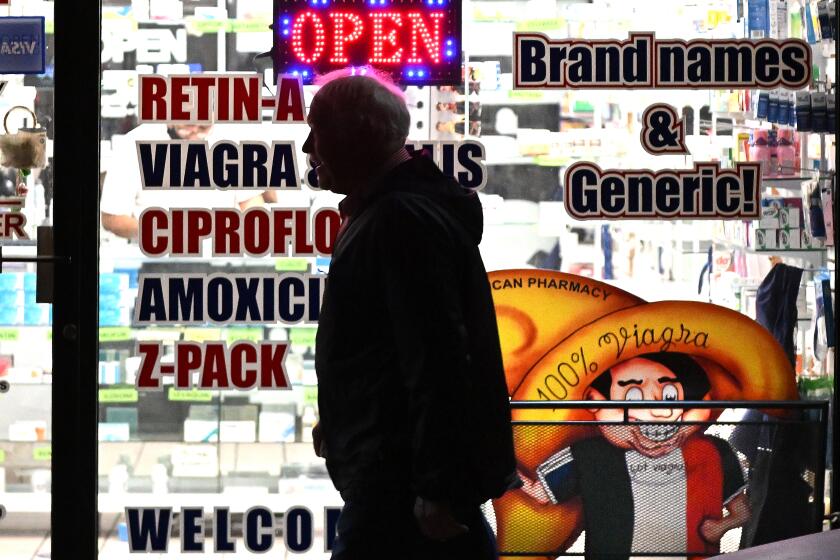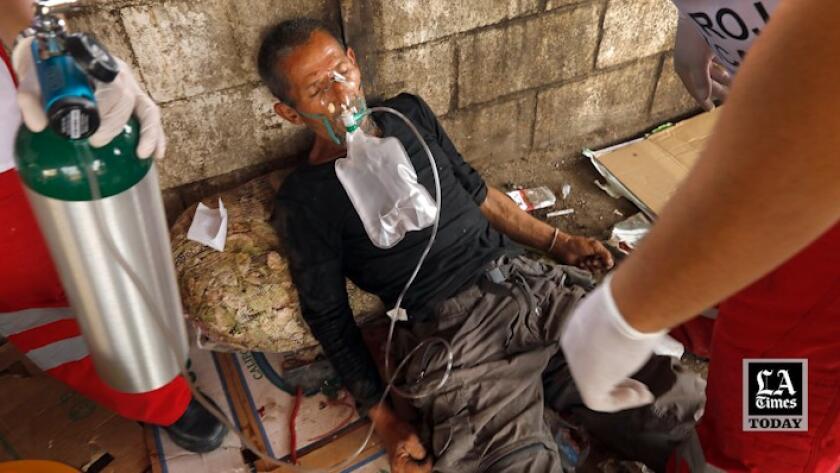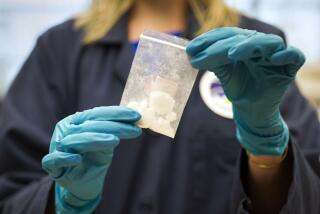- Share via
MEXICALI, Mexico — As fentanyl has ravaged the United States, killing tens of thousands of Americans each year, Mexican leaders have insisted their country has been virtually untouched by the opioid.
Mexico officially recorded just 19 deaths from all opioids in 2020, the most recent year for which data are available, with President Andrés Manuel López Obrador contending fentanyl is exclusively a U.S. problem — one he blames on American “social decay.”
“There is a lot of disintegration of families, there is a lot of individualism, there is a lack of love, of brotherhood, of hugs,” he said during a March news briefing. “Here ... we do not have consumption of fentanyl.”
But new data tell a different story.

A novel testing initiative in Mexicali, the capital of Baja California, found that 23% of more than 1,100 bodies sent to the morgue over the last year tested positive for fentanyl, a synthetic opioid as much as 50 times stronger than heroin.
The research was led by the director of Baja California’s Forensic Medical Services, who shared the unpublished results with The Times. It is believed to be the first study of its kind in a nation where medical examiners have traditionally not done toxicology testing, in effect making it impossible to measure the scope of the nation’s drug problem — or even confirm its existence.
And it stands in stark contrast to the country’s official statistics, which show that 184 people received treatment for addiction to the drug nationwide in 2021.
The new Mexicali data are “a massive statement and finding,” said David Goodman-Meza, a UCLA harm-reduction researcher. “To say that more than 200 people — of just the people who died in one city — had fentanyl on board really goes against the official narrative of the president saying that nobody uses fentanyl. It’s a massive contradiction to what officials say is going on.”
The data also seem to confirm what many in Mexicali have been seeing for years.
Julio Buenrostro was sipping a coffee on a recent morning when his radio crackled, and he sprang into action. A paramedic with the Red Cross, a nonprofit ambulance service that handles most emergency calls in Mexicali, Buenrostro had already responded to one overdose that morning. Now, at 9 a.m., he was heading to his second.
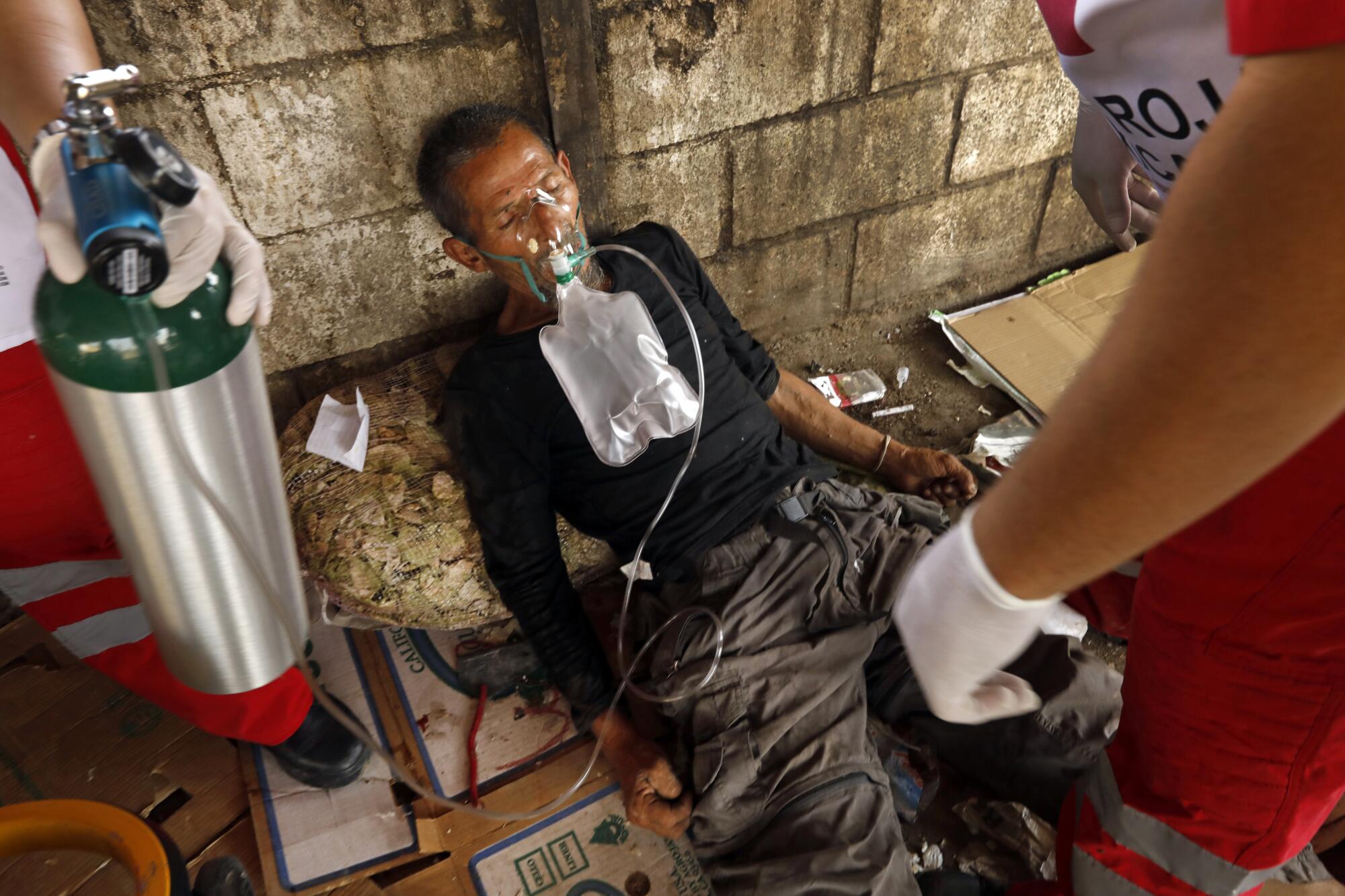
Sirens wailing, he sped toward Independencia, a middle-class neighborhood with gated yards and palm trees.
Inside a darkened utility room off his family’s home, 55-year-old Arturo González was dead, his limbs stiff and his head resting on an ironing board that appeared to have caught his fall as he collapsed. A needle lay on the ground near his new Adidas sneakers.
The day before, González had finished a yearlong stint at a rehabilitation center, his brother Leo said.
The siblings had celebrated with a meal at a seafood restaurant. Then his brother had dropped off González at an aunt’s house to sleep. At some point, González had apparently left the house in search of a fix — and found one, his brother said.
“The president says there isn’t any fentanyl here,” Buenrostro said as he drove back to the station. “But every day we see people dying from it.”
The new numbers help quantify a largely hidden epidemic that has often fallen under the purview of police and paramedics, who say they respond to four or five overdose cases daily. “It’s not just a problem with people living in the street,” said Carlos Romero, deputy director of Mexicali’s municipal police department. “It’s everywhere.”
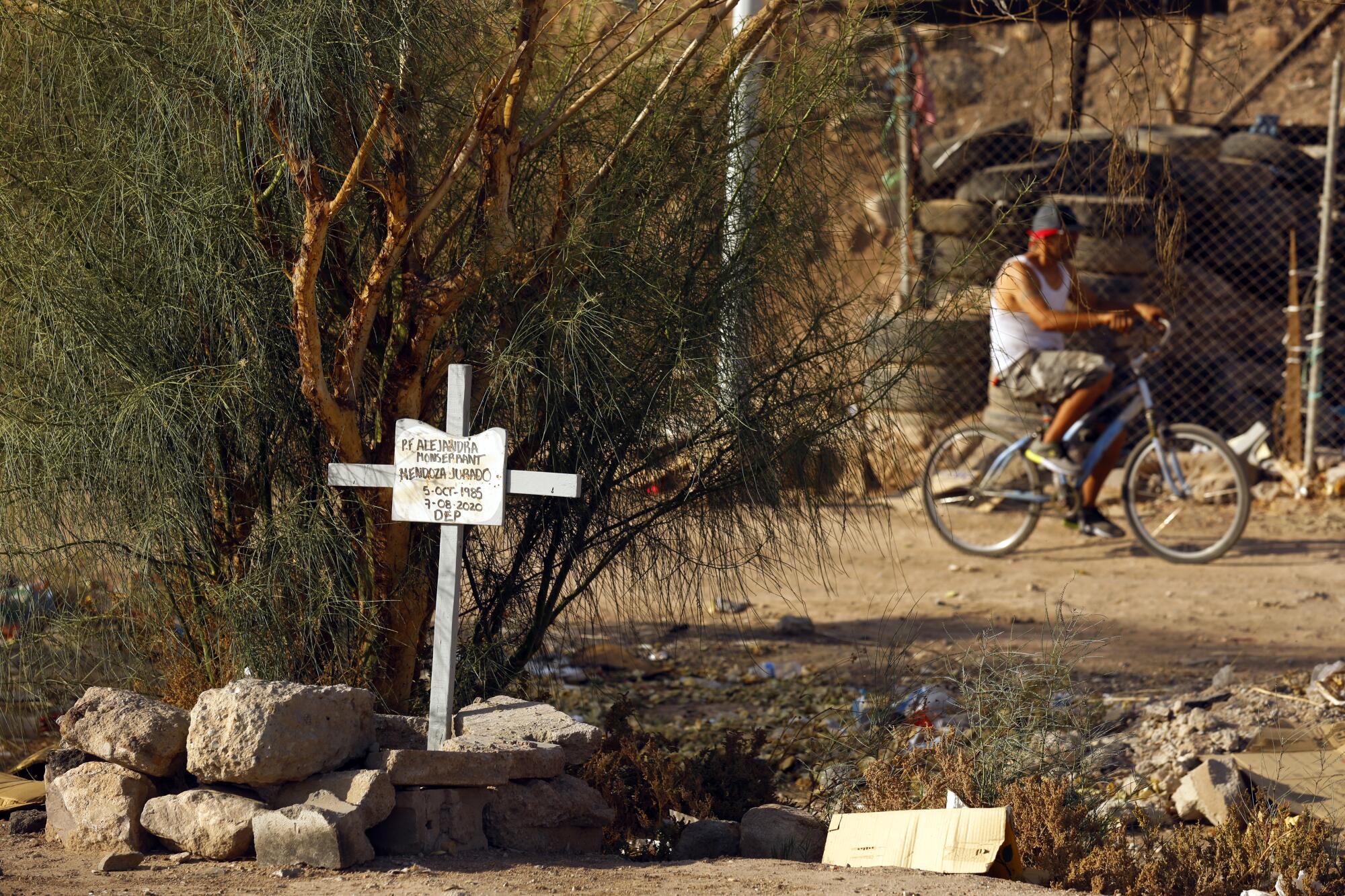
At the Refugio del Hijo Prodigo rehabilitation center, a walled compound tucked amid farmland on the outskirts of Mexicali, nearly all of the 92 residents there recently have struggled with addiction to fentanyl.
They pray together each night for the friends they have lost to the drug. They rarely attend the funerals.
“It’s too much,” said Santiago Raygoza, the center’s director. “It’s like seeing your future.”
As the chief medical examiner in Baja California state, Dr. César González Vaca had seen increasingly dire warnings from the U.S. Drug Enforcement Administration about the fentanyl problem across the border.
He had also begun noticing an uptick in deaths in his morgues that looked a lot like opioid overdoses.
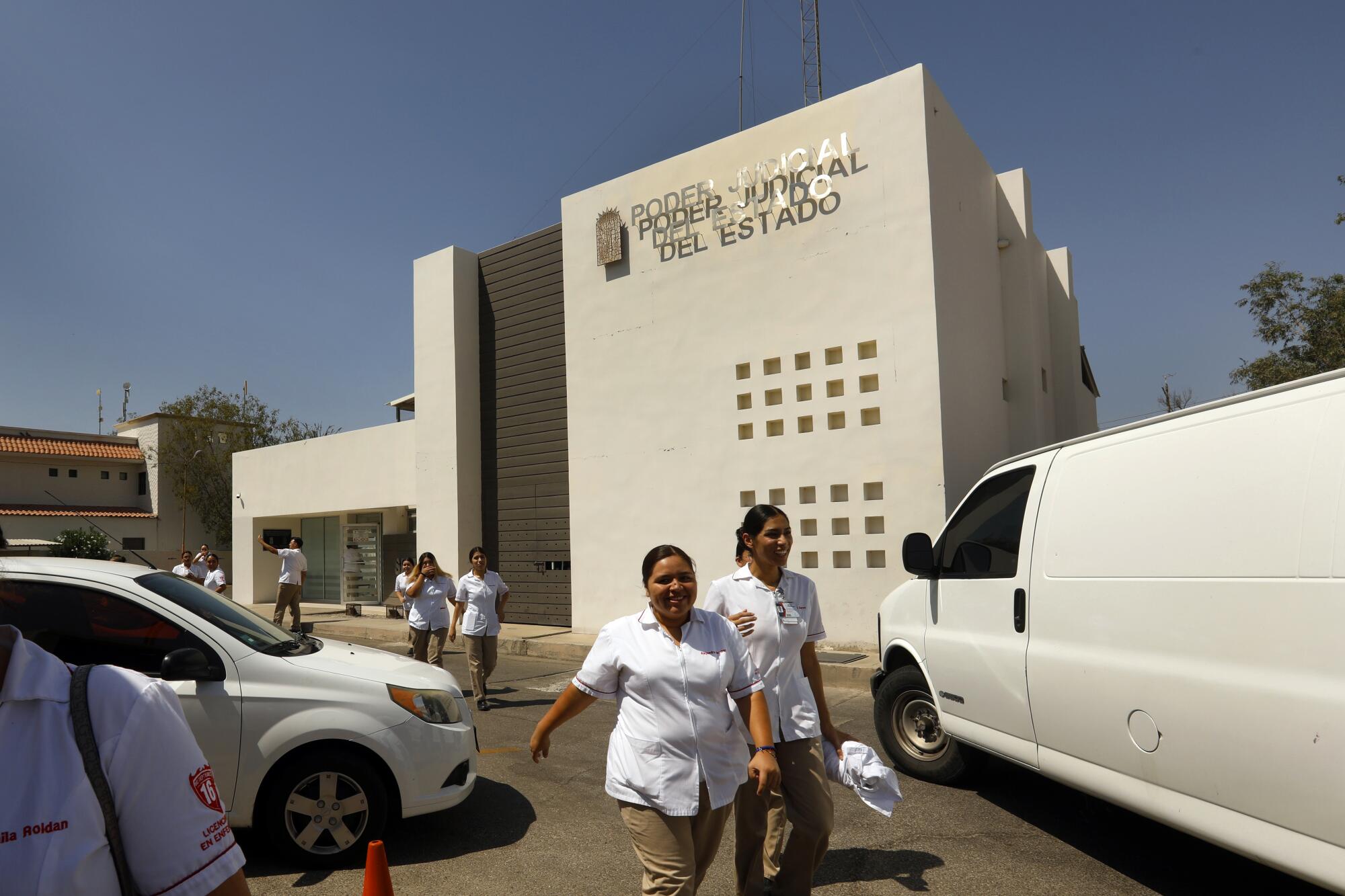
But in Mexico, postmortem drug testing is a rarity. That means when people die, medical examiners typically don’t find out what substances were in their bloodstream, or whether they were enough to kill.
González Vaca had a hunch that his country’s official data on fentanyl use wasn’t telling the full story. So beginning last June, he and his team started performing toxicology tests on nearly every body that came through the morgue in Mexicali — a city of just over 1 million people — regardless of whether it appeared the person’s death was linked to drugs.
The results surprised even him. Out of 1,106 bodies tested, 250 — or 23% — were positive for fentanyl.
By comparison, in Los Angeles County, an estimated 28% of the 7,137 bodies the medical examiner tested for the drug last year came up positive.
When González Vaca and his team did their testing, they also checked for the presence of other drugs. They found that 391 bodies tested positive for methamphetamine. In all, 562 tested positive for any so-called drug of abuse, including marijuana.
González Vaca said 80% of those with fentanyl in their system also tested positive for another drug.
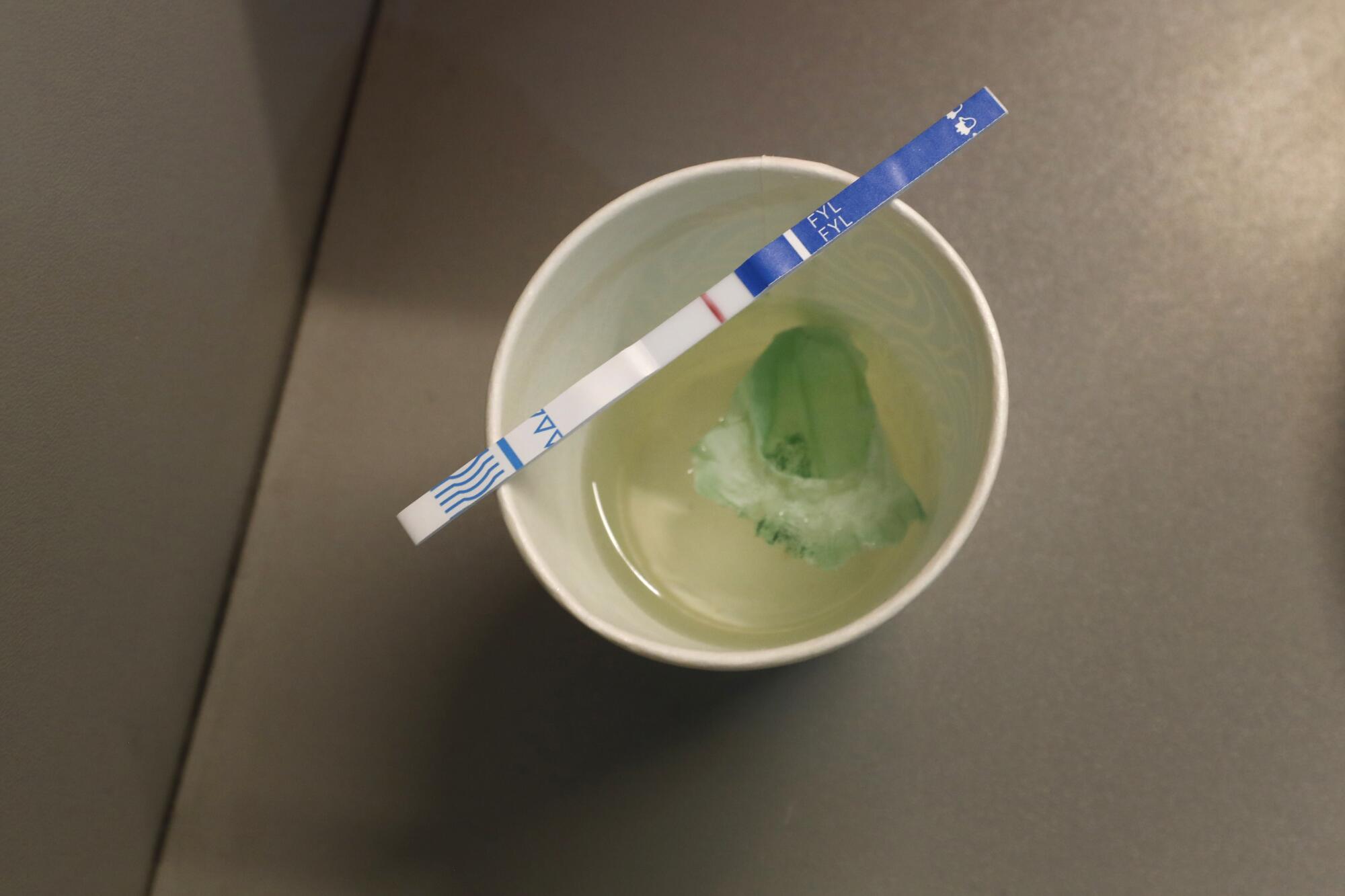
It’s well documented that fentanyl has been infiltrating both powders and pills on the street for years.
A recent Times investigation found fentanyl had spread from the streets to brick-and-mortar drugstores, with some pharmacies along the border and in beachside tourist towns passing off fentanyl pills as weaker pharmaceutical opioids illegally sold over the counter.
A study published in 2020 analyzed drug residue from 89 syringes and drug wrappers in Tijuana. It found fentanyl in 93% of samples of white powder marketed as heroin and in roughly three-quarters of all samples tested.
Yet few users knew they were consuming fentanyl, said an author of that study, Clara Fleiz, a researcher at Mexico’s National Institute of Psychiatry: “The population doesn’t know what they are consuming.”
The new Mexicali data are not without limitations. Because the city is near the border — a drug-trafficking hot spot — it’s unclear whether findings there would hold true elsewhere in the country.
And because most bodies sent to the morgue are victims of violence, accidents or other unnatural deaths, the patterns the team detected among those tested might not be representative of trends in the city as a whole.
Some of the dead — roughly 5%, González Vaca said — were too decayed for testing, which requires samples of blood or urine to complete. That testing includes a seven-drug assay similar to the urine tests used by many probation departments, as well as a separate test for fentanyl.
“They are basically like pregnancy tests,” González Vaca explained.
New testing by Times reporters has revealed that some pharmacies in cities across Mexico sell counterfeit medication tainted with fentanyl and methamphetamine.
And just like a pregnancy test, he said, the assays show only a positive or negative result. Because they cannot measure the amount of a drug in a person’s bloodstream, they can’t be used to determine whether someone died of an overdose or simply had drugs in their system.
That’s why officially, González Vaca said, none of the bodies he studied were classified as overdose victims.
Although men in their early 30s were the demographic most likely to test positive for drugs of abuse, González Vaca said, he had otherwise limited information on the lives and drug histories of the dead.
On a downtown block in Mexicali not far from a U.S. border crossing, a lanky man walked into a storefront, took a seat in a small metal cubicle and took out a bag of what he described as China White heroin.
La Sala, as the space is known, is run by a nonprofit organization that provides users with clean needles, fentanyl tests and lifesaving medication that can help reverse an opioid overdose.
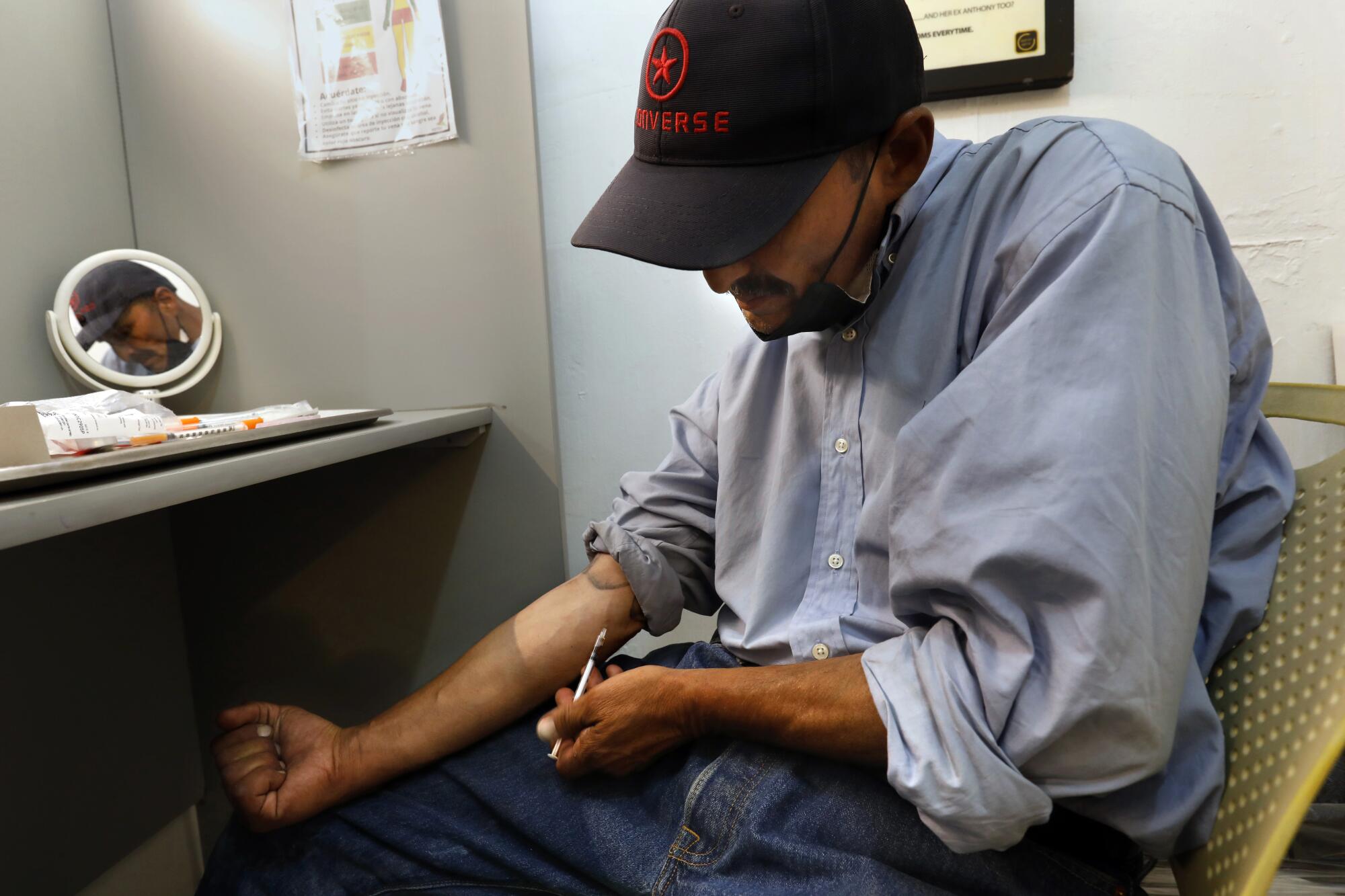
Néstor Maldonado Garcia prepared his heroin, cooking it with a candle in a small metal container. He dropped a pinch into a cup of water. A La Sala worker dipped a fentanyl test strip into it. A red line soon appeared.
“Just so you know, this does have fentanyl in it,” the worker said.
But Maldonado was already shooting up.
For years, he had been on a better track, visiting a methadone clinic every morning before going to work cleaning cars in parking lots. But in February, Mexico’s government closed the country’s only methadone manufacturer, Psicofarma, over concerns about quality control.
Afterward, all three methadone clinics in Mexicali closed. Maldonado soon returned to buying drugs on the street.
Researchers say Mexico’s lack of understanding of the extent of its fentanyl crisis has only fueled its problem.

“We’ve known for a while that Mexico is undercounting the number of people using opioids and methamphetamine,” said Steffanie Strathdee, a UC San Diego epidemiologist who studies drug use along the border. “As a result of that, the government has decided that methadone and other harm reduction strategies are not worthy of pursuit because the number of people affected is so small.”
That, in turn, could lead to a spike in overdoses, not just because of the strength of fentanyl but also because the odds of overdose are much higher after long periods without use.
In some cases, Strathdee worried, people might try to safely avoid the powerful synthetic by purchasing a weaker opioid such as Percocet or Vicodin, only to find that those pills are actually tainted with fentanyl too.
She said the decision to close the methadone factory is linked to the government’s refusal to admit Mexico has a fentanyl problem. There’s a similar pattern, addiction experts say, in the government’s opposition to the widespread use of the drug naloxone, which can instantly reverse an overdose.
An alert by the U.S. State Department urges American travelers to “exercise caution” when purchasing drugs from pharmacies in Mexico.
López Obrador has criticized U.S. efforts to make the lifesaving medication available for purchase without a prescription and opposed efforts to deregulate it in Mexico.
“Will it serve as a medication to eradicate addiction?” López Obrador asked recently. “Or is it just going to prolong the agony?”
Meanwhile paramedics and hospitals are struggling to get sufficient supplies, and the lack of available naloxone scares people struggling with addiction.
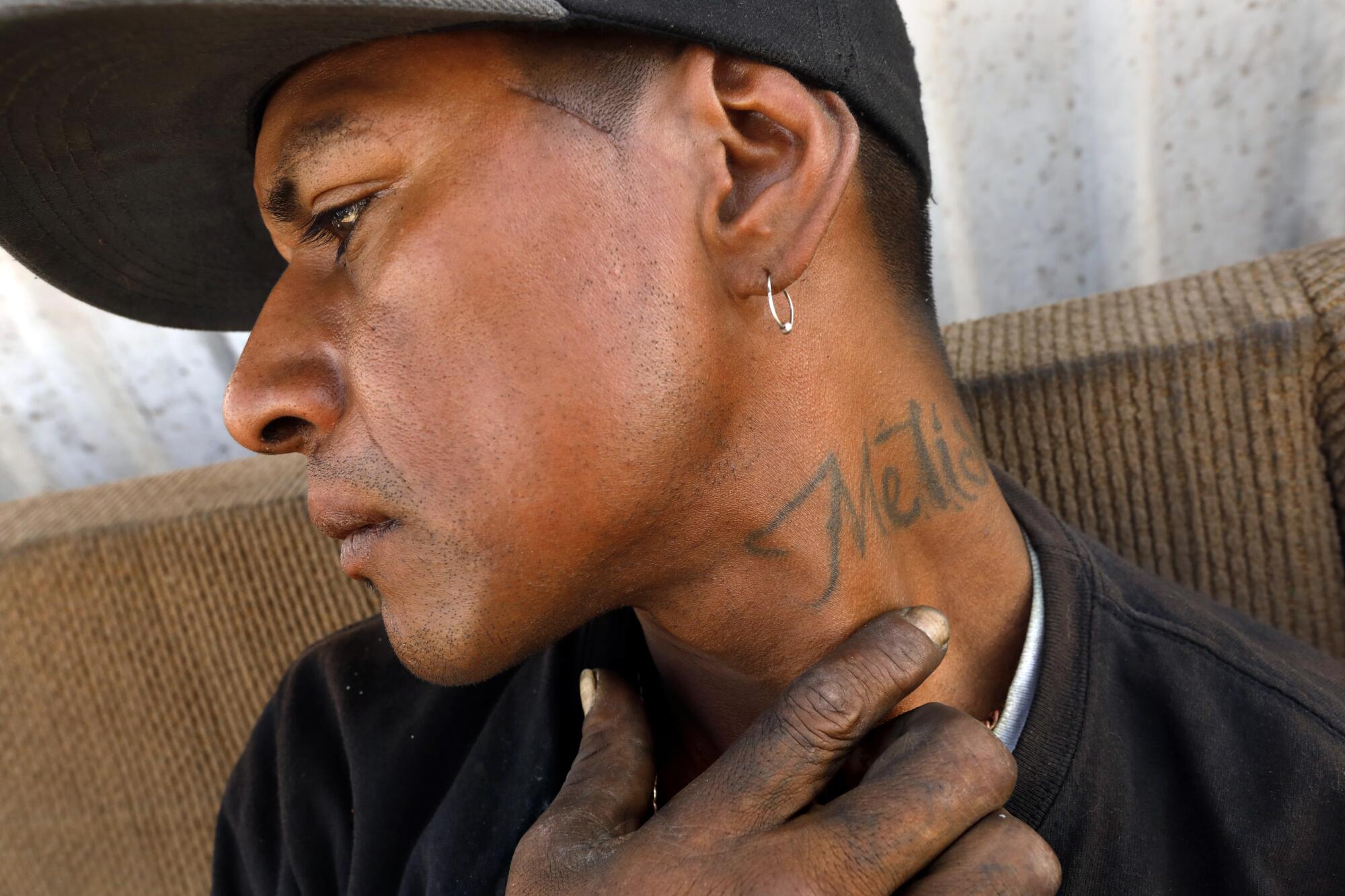
Cristian Flores Ojeda, who lives at a homeless encampment near a fruit-packing plant in downtown Mexicali, said he had nearly died several times over the last few years as Mexicali’s heroin supply has been flooded with fentanyl. At times, he and others had tried to reverse overdoses with DIY treatments that experts say are bogus.
On a recent Monday, Flores was sitting on a dusty couch when he noticed a man who had overdosed and persuaded a passerby to call 911.
About an hour later, a police cruiser pulled up. Officer Sergio López hopped out and strode toward the man, who lay slumped across a bag of onion skins.
The man wasn’t moving. López crouched and touched the man’s wrist in search of a pulse.
“He’s alive,” López said into his radio. “It’s an overdose.”
López grabbed a jug of water and splashed it on the man’s cheeks and neck. He tugged his earlobes. Poked his ribs.
“Amigo, amigo,” López said loudly, trying to coax the man back into consciousness. “No te vayas.”
Don’t go.
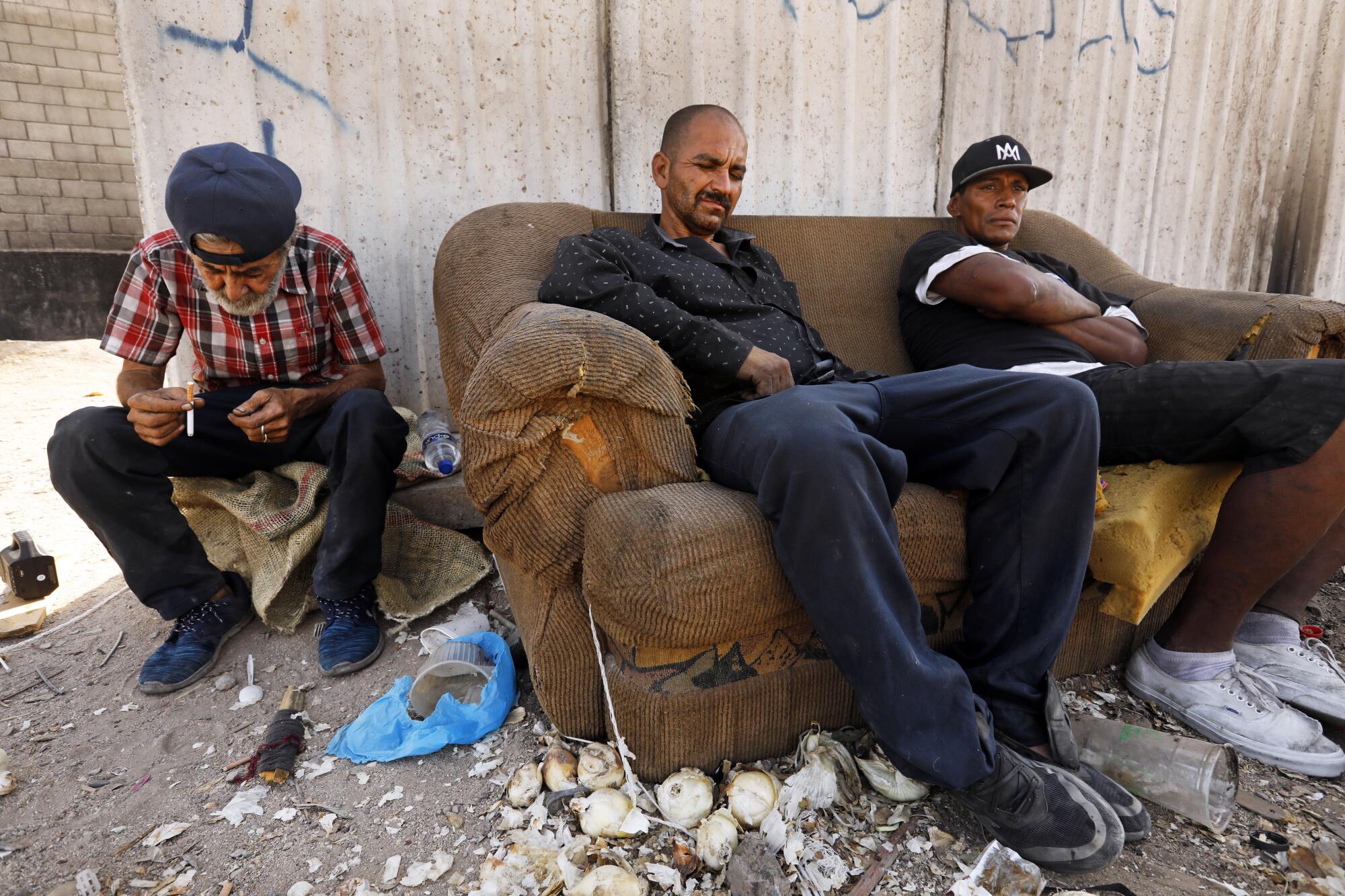
In March, González Vaca expanded his study to Tijuana, home to Baja California’s busiest morgue. Already the results show dozens of people died with drugs in their systems.
Of 225 bodies tested there, roughly two-thirds came up positive for any type of drug; 30 — or about 13% — were positive for fentanyl and 125 were positive for methamphetamine.
That could mean the patterns of drug use are significantly different from those in Mexicali, or it could just be a result of the small sample size.
González Vaca said he hopes to bring his testing initiative to Ensenada, a coastal town about 85 miles southwest of Mexicali.
Addiction experts hope the interest in testing expands even further. Joseph Friedman is a UCLA researcher who studies addiction along the U.S.-Mexico border. To him, the decision to start testing only raised questions about why that didn’t happen sooner or in more cities.
“It’s great that Mexicali is doing this, but we need this to happen elsewhere along the border,” he said. “We have every reason to think that this problem is spreading to other parts of Mexico.”
- Share via
Watch L.A. Times Today at 7 p.m. on Spectrum News 1 on Channel 1 or live stream on the Spectrum News App. Palos Verdes Peninsula and Orange County viewers can watch on Cox Systems on channel 99.
More to Read
Sign up for Essential California
The most important California stories and recommendations in your inbox every morning.
You may occasionally receive promotional content from the Los Angeles Times.




